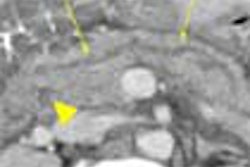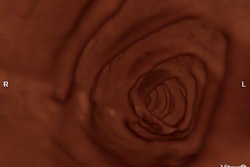Radiologists are honing in on the secrets of CT coronary calcium scoring. This is the decade, after all, when researchers vowed to make more sense of calcium’s role in both cardiac risk and patient management. And while hundreds of coronary calcium studies on the books make a solid starting point, new technologies and creative study design are providing new levels of answers.
Dear CT Insider,
Radiologists are honing in on the secrets of CT coronary calcium scoring. This is the decade, after all, in which researchers have vowed to make more sense of calcium’s role in both cardiac risk and patient management. And while hundreds of coronary calcium studies on the books make a solid starting point, new technologies and creative study design are providing surprising new answers.
Take the subject of our Insider Exclusive, a study by Dr. Joseph Schoepf and colleagues at Harvard Medical School in Boston and the University of Aachen in Germany. With the aid of a dedicated cardiac phantom, the group found that significant dose reductions were possible in calcium scoring, and that calcium mass was less variable at low doses than with either the Agatston or volume-scoring methods.
Then, using a noise-generator program, they simulated the effects of scanning with multiple protocols in patients -- who were actually scanned only once. Did mass-scoring retain its superiority in vivo? Find out here, in results offered to our Insider subscribers first.
Also in this issue, a study from Spain compared coronary calcium scores with other cardiovascular risk indicators. Calcium levels correlated poorly with C-reactive protein and fibrinogen, for example, but were closely aligned with PROCAM risk indicators. A large trial recently found only a weak correlation between calcium and the venerable Framingham Risk Score, but high calcium levels also revealed risks that Framingham missed.
Meanwhile in pancreatic imaging, a group from Massachusetts General Hospital in Boston found that CT could reliably diagnose pancreas divisum, a potentially troublesome condition that has been considered the purview of invasive endoscopic retrograde pancreatography. Researchers from Italy used MDCT to assess vascular infiltration in pancreatic cancer.
At the European Congress of Radiology in Vienna, investigators from the Netherlands improved their diagnostic prowess by fusing MRI and CT images of the prostate. And Israeli radiologists test drove their ripping new 40-slice CT scanner.




















